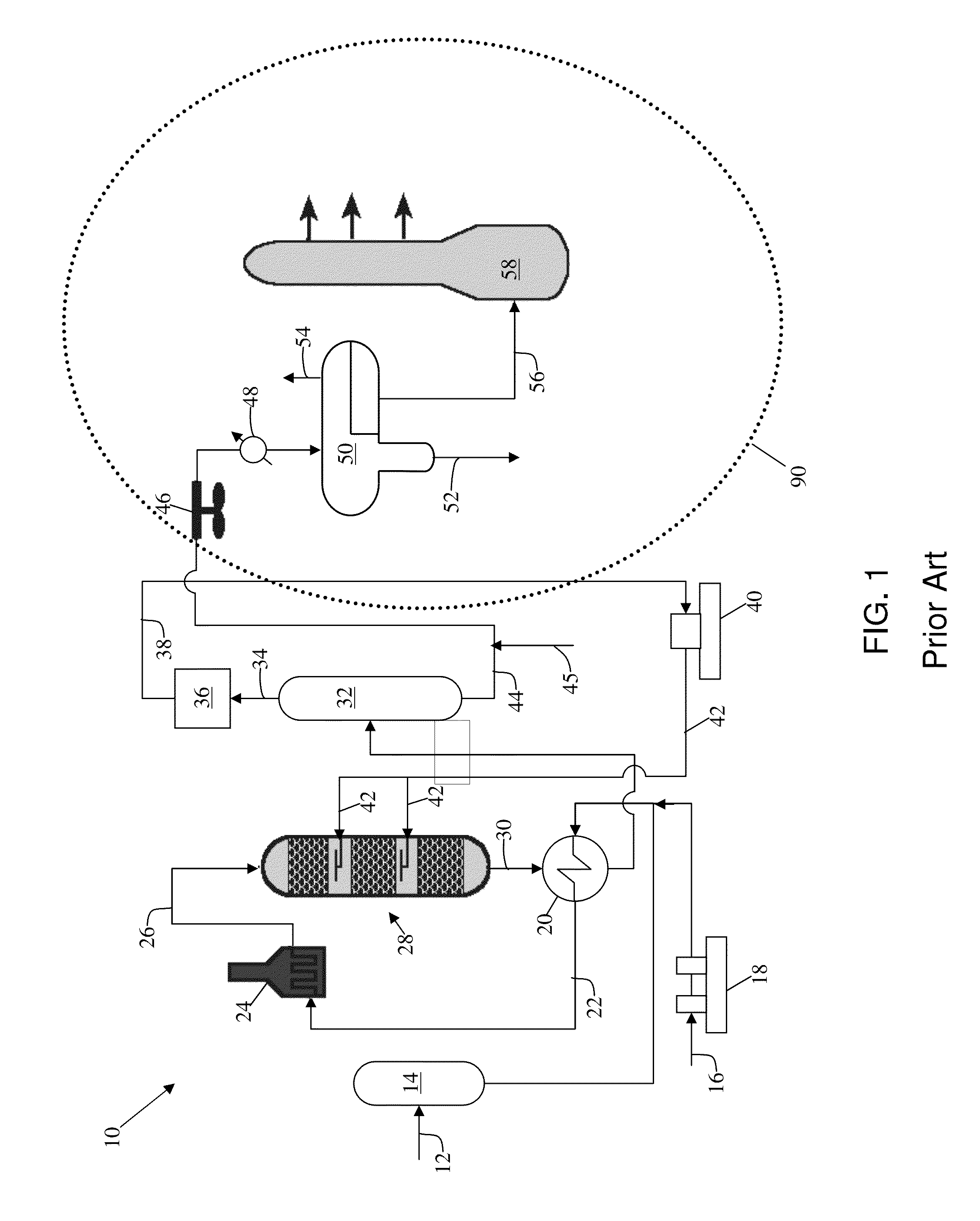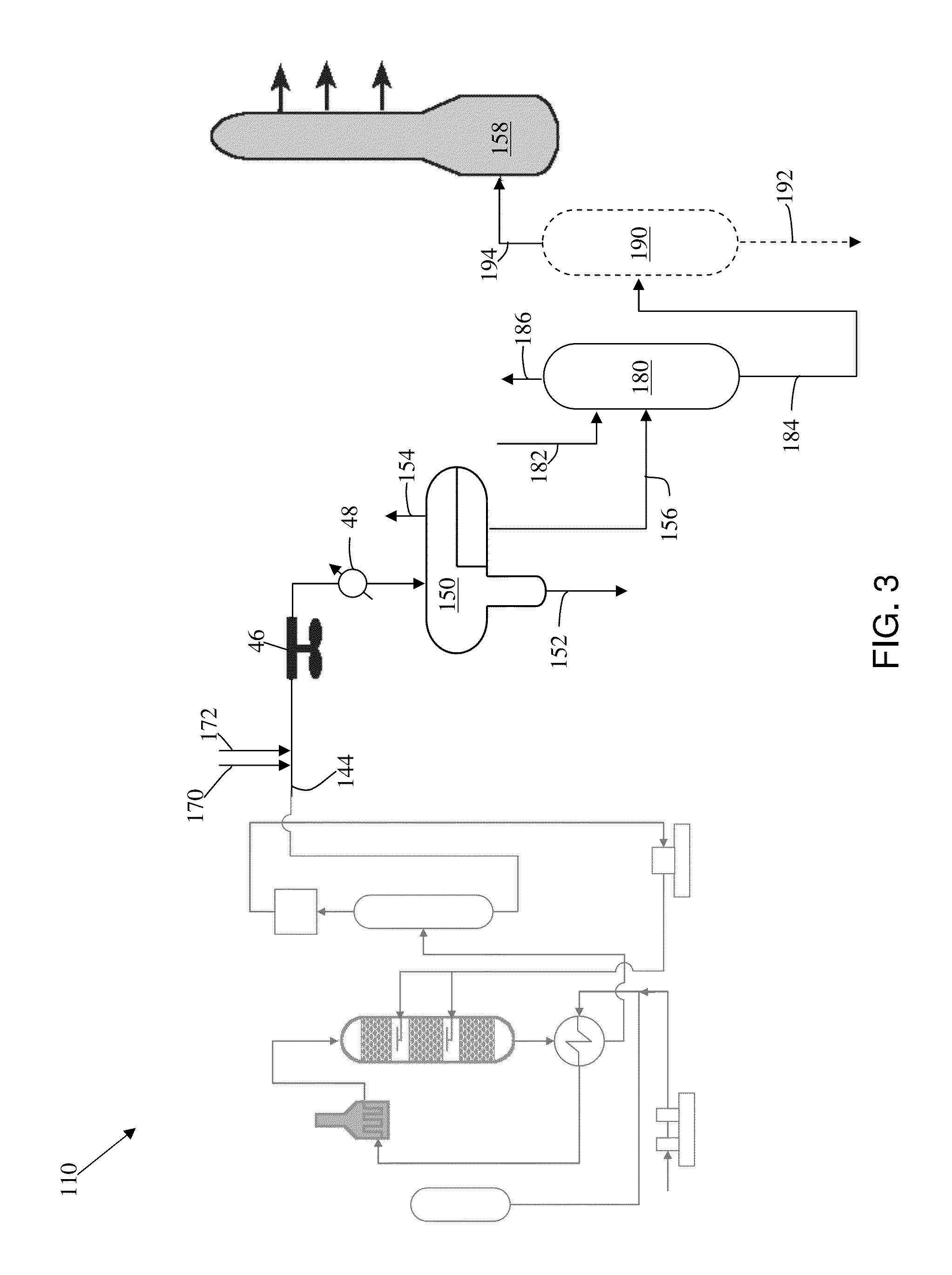Hydrotreating unit with integrated oxidative desulfurization
a technology of oxidative desulfurization and hydrocarbon streams, which is applied in the direction of hydrocarbon oil treatment, liquid gas reaction process, refining with oxygen compounds, etc., can solve the problems of difficult upgrading of existing hydrotreating reactors in these facilities, health and environmental problems, and the inability of most existing hydrotreating processes to remove all of the sulfur-containing compounds typical of hydrocarbonaceous fuels
- Summary
- Abstract
- Description
- Claims
- Application Information
AI Technical Summary
Benefits of technology
Problems solved by technology
Method used
Image
Examples
example
[0064]FIG. 9 illustrates the process configuration for the example using the low pressure section of a hydrotreater to carry out the oxidation reactions. A diesel oil feed 726 containing 1.87 W % of sulfur (elemental sulfur excluding the carbon and hydrogen in the structure) and 87 ppmw of nitrogen was subjected to a hydrotreating process over Co—Mo on Alumina hydrotreating catalysts at 30 kg / cm2 of hydrogen partial pressures, LHSV of 1 h-1 to obtain 500 ppmw of sulfur. From the sulfur speciation of the feedstock diesel, the average molecular weight of the sulfur species were calculated to be 202 g / g-mol. This results in 11.08 W % of organic sulfur, or 19,397 kg in 175,000 kg of diesel oil in diesel oil to be hydrotreated then and oxidized. Most of the organic sulfur compounds were hydrodesulfurized yielding H2S and hydrocarbons. Only 0.05 W % elemental sulfur, or 0.28 W % of organic sulfur, remains in the hydrotreated products.
[0065]The desulfurized hydrocarbon stream 730 from the ...
PUM
| Property | Measurement | Unit |
|---|---|---|
| temperature | aaaaa | aaaaa |
| temperature | aaaaa | aaaaa |
| temperature | aaaaa | aaaaa |
Abstract
Description
Claims
Application Information
 Login to View More
Login to View More - R&D
- Intellectual Property
- Life Sciences
- Materials
- Tech Scout
- Unparalleled Data Quality
- Higher Quality Content
- 60% Fewer Hallucinations
Browse by: Latest US Patents, China's latest patents, Technical Efficacy Thesaurus, Application Domain, Technology Topic, Popular Technical Reports.
© 2025 PatSnap. All rights reserved.Legal|Privacy policy|Modern Slavery Act Transparency Statement|Sitemap|About US| Contact US: help@patsnap.com



